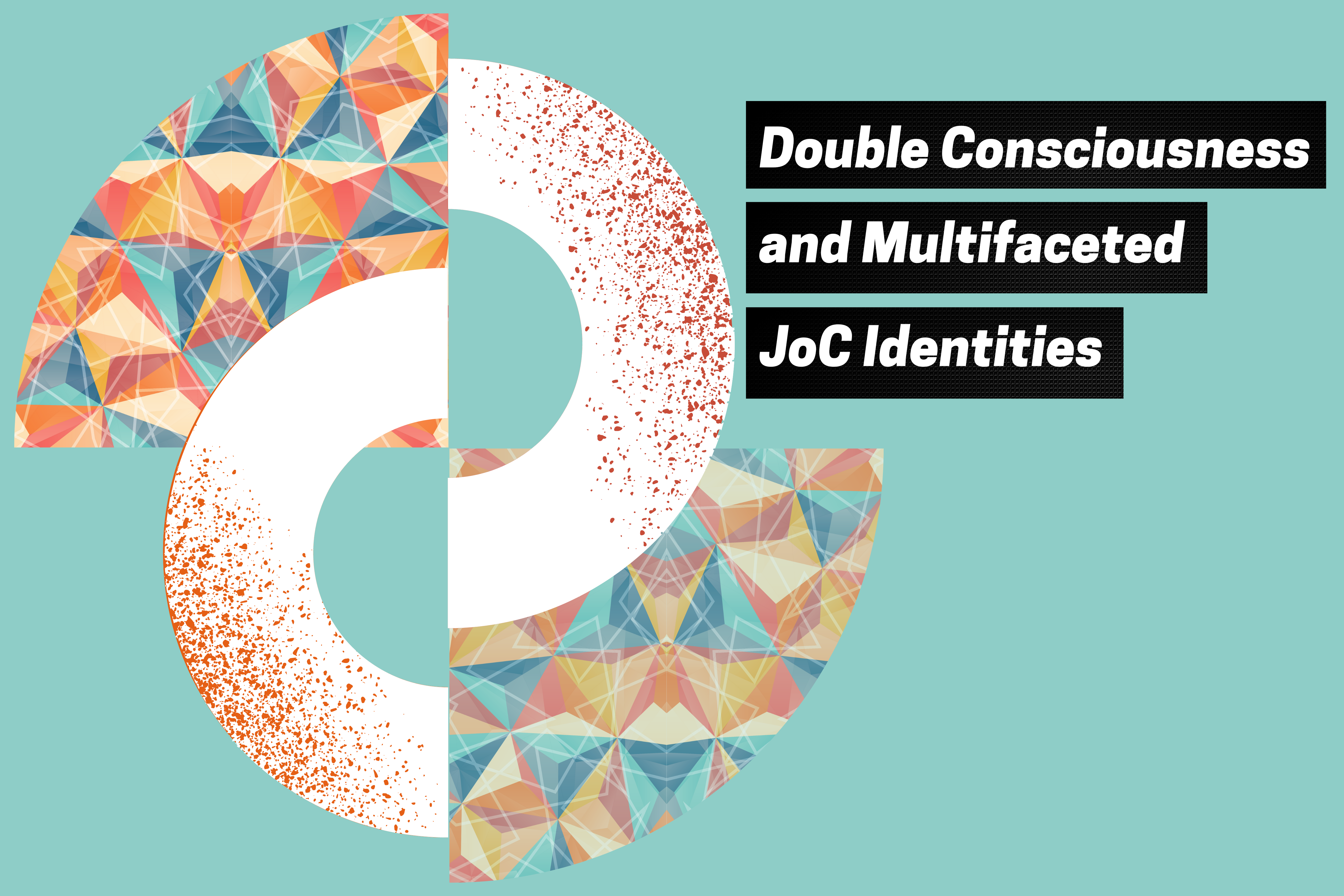
Jews of Color who participated in Beyond the Count: Perspectives and Lived Experiences of Jews of Color, shared many ways that their identities overlap with, intersect with, and infuse each other. For some who identify as Jews of Color, these intersections may be expressed through recipes, like those in Michael Twitty’s new book KosherSoul or in Alana Chandler’s Tlaim: A Patchwork Cookbook. For others, the merging of identities may be experienced through unique expressions of Jewish ritual like a Black liberation Juneteenth seder. Still, many Jews of Color wish they could more frequently experience and express an unquestioned wholeness of their multifaceted identity, but too often find themselves having to consider how they are perceived by the white, Ashkenazi-centric Jewish community.
Participants in Beyond the Count described an experience of “double consciousness,” one of the most famous theoretical concepts from W. E. B. Du Bois, a foundational social scientist, the first Black man to receive a Ph.D. from Harvard University, and a founding member of the NAACP. As our research team explains, double consciousness “describes the way that marginalized people, specifically Black/African American people, navigate the hazards of American racism by ‘looking at one’s self through the eyes of others.’”
In Beyond the Count, participants often described a heightened sense of awareness about how they are perceived by others. This isn’t surprising given that Jews of Color are rarely in JoC-only spaces and when among white Jews are often met with confusion, tokenism, fetishization, or discrimination. In fact, 80% of participants in Beyond the Count experience discrimination in Jewish settings.
Another way of explaining double consciousness is to say that in a society built on white supremacy, BIPOC (Black, Indigenous, and People of Color) have to learn and worry about what white people think of them. How white people view them. BIPOC are always aware of what Toni Morrison refers to as the white gaze. White people are rarely in circumstances where they must learn what BIPOC perceive of them in order to be accepted or safe.
For Jews of Color, this double consciousness occurs in multiple directions. Several research participants said that in addition to experiencing the strains of double consciousness among white Jews, mentioning their Jewish identity in BIPOC spaces sometimes resulted in experiences of antisemitism and other unwelcomed comments.
Having to navigate others’ perceptions is exhausting—some even refer to this as racial fatigue. In our report’s section on double consciousness, the research team writes, “Many of our study’s participants shared how they consciously compartmentalize parts of themselves in order to reduce the stress of double consciousness.”
Not surprisingly, many Jews of Color who participated in Beyond the Count said they seek out community where they don’t feel required to compartmentalize their identities. This is perhaps a major reason why Jews of Color feel such relief and familiarity when connecting with other JoC, especially in JoC-only spaces.
However, whether among other Jews of Color or as individuals, JoC have created beautiful expressions of their multifaceted Jewish selves. Our research team explains that these expressions emerge from identities that are not fractured but whole. “Central to this project is the knowledge that peoples’ racialized identities are inseparable from their Jewish identities…respondents’ ethnic, racial, and cultural identities influence and infuse their Jewish experiences.” In other words, for Jews of Color, Jewishness is inextricably linked to the multiple identity categories they hold.
Some of the ways Jews of Color explore and express their multifaceted identities is by “inventing new ways to connect Jewishly,” such as expanding Jewish rituals and traditions to reflect the interwovenness of multiple cultural backgrounds. A participant who is a Japanese American Jew shared that at a virtual retreat she was able to choose miso, soy sauce, and toasted sesame seeds as the besamim (spices) for Havdalah (ritual marking the end of Shabbat).
“Being able to do a whole Havdalah ritual with those things was really, really powerful for me because it was one of the first times when I felt like there was actually a part of myself and my history in the ritual,” the participant shared.
As Jews of Color navigate the challenges of American racism in and out of the Jewish community, they are simultaneously contributing to an active, living Jewish culture infused with beautiful diversity. In fact, merging existing Jewish tradition with that of other cultures is a longstanding Jewish practice found at nearly every turn in Jewish history—perhaps even a practice that has ensured the persistence of the Jewish people. When Jews of Color are able to unquestioningly express themselves and their Judaism in ways that represent the wholeness of multifaceted identity, the entire Jewish people will be enriched.


